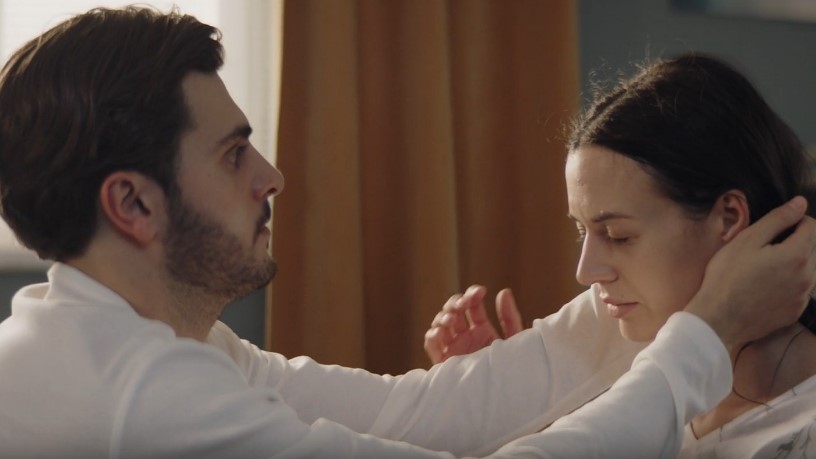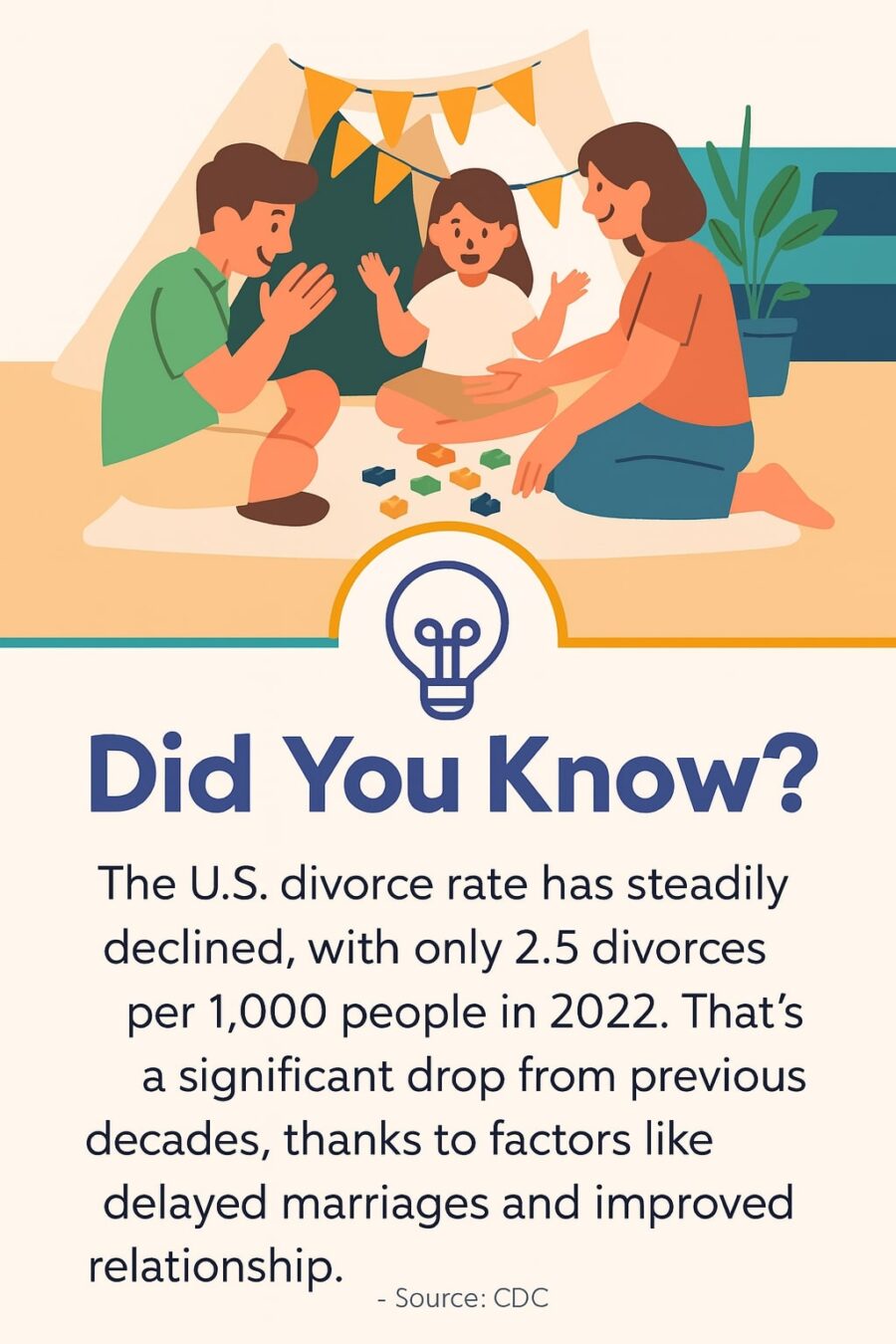Should I get a divorce? Most couples who begin asking this question are unprepared and often not even on the same page when they begin the process. The decision to divorce ranks as one of life’s most crucial choices, with consequences that last for years or even a lifetime.
Yet surprisingly, many couples struggle with marital problems for an average of six years before finally seeking professional help to determine if divorce is the right answer.
Despite what many believe, divorce is not the escape most people imagine it to be—in fact, 95% of the time, the reality differs significantly from expectations. Furthermore, the financial impact can be devastating, with over 50% of divorces creating poverty.
Many mental health professionals consider divorce the worst possible life catastrophe a person can experience, second only to losing a child. This emotional and financial toll explains why making this decision requires careful consideration rather than impulsive action.
Before rushing into a life-altering decision, couples need to ask themselves essential questions that go beyond the immediate emotional distress.
Although conventional wisdom suggests that children do better with happy, separated parents than with parents who constantly fight, the attachment issues and long-term effects on children cannot be overlooked.
Consequently, this article explores the critical questions you haven’t considered yet—questions that will help you determine whether divorce is truly the right path forward for your unique situation.
Table of Contents
ToggleEmotional and Communication Health Check

The health of your marriage’s emotional and communication systems often reveals whether divorce is truly necessary. Before making this life-altering decision, examine how you and your spouse interact on a daily basis.
Do you and your spouse communicate respectfully?
Respect forms the foundation of healthy marital communication. This begins with an attitude that acknowledges your partner’s inherent worth, regardless of disagreements. When respect erodes, communication typically follows suit.
Couples who communicate effectively listen without interrupting, ask clarifying questions, and avoid harmful language patterns. In contrast, disrespectful communication takes many forms:
- Criticism, defensiveness, stonewalling, and contempt (identified by experts as the “Four Horsemen” that predict relationship failure)
- Using “you” statements that sound accusatory instead of “I” statements that express feelings
- Name-calling, sarcasm, blaming, or using absolutes like “you always” and “you never”
A survey of mental health professionals revealed that 65% identified communication problems as the leading cause of divorce, while 43% cited inability to resolve conflicts as the second most common factor.
Moreover, men and women report different communication complaints—men often cite nagging and lack of appreciation, while 80% of women say their feelings weren’t validated. Studies also show that lesbian couples have the highest divorce rate among all couple types.
Are you tired of trying or just emotionally exhausted?

Marital burnout develops when one or both partners feel emotionally depleted. This condition emerges when “the reality of marriage is not what they expected,” causing profound emotional and physical reactions.
Signs of emotional exhaustion include:
Feeling unmotivated to do anything with or for your spouse Believing you can’t rely on your partner’s support. Thinking about divorce frequently. Walking on eggshells around your partner Experiencing prolonged periods of bad mood and negativity.
Additionally, depression often lurks behind relationship problems without couples realizing it. Depression manifests physically, emotionally, cognitively, and socially—making everything seem worse and often causing the depressed partner to blame their unhappiness on their spouse.
Have you tried to fix it over and over again?
Sixty-nine percent of relationship conflict centers around perpetual problems—fundamental differences between partners that won’t disappear. What matters isn’t solving these issues but establishing productive dialog about them.
When couples have the same argument repeatedly with no resolution, they eventually create emotional injuries that overshadow the original issue. Instead of making progress, partners feel misunderstood and unfairly treated, pushing them further apart emotionally.
If you’ve attempted multiple fixes without success, the question becomes whether you’re dealing with solvable problems or perpetual ones requiring different approaches. Before considering divorce, examine whether you’ve tried addressing underlying themes rather than surface conflicts.
Self-Reflection and Personal Responsibility
“”Divorce isn’t such a tragedy. A tragedy’s staying in an unhappy marriage, teaching your children the wrong things about love.”” — Linda Piff, Divorce Attorney
Looking inward is often the hardest part of deciding whether to pursue divorce. Personal reflection requires honesty about your own role in the relationship’s current state.
How have you contributed to the problem?
Marriage works best when both partners take personal responsibility for their own moods, happiness, self-esteem, and well-being. Essentially, you cannot expect your partner to be responsible for your emotions, yet many couples fall into this pattern.
Taking ownership means acknowledging that you shape your life through your choices about how to think, feel, and respond in each circumstance.
Self-awareness is crucial for relationships because it cultivates empathy and resilience. Through regular self-reflection, partners can identify negative patterns in their interactions and work to change them.
Additionally, couples who examine their personal contributions to problems often find more constructive solutions than those who simply blame each other.
“Staying in your own lane” means respecting the boundary between you and your spouse while taking accountability for your reactions. Without this boundary, you end up being under-responsible for yourself and over-responsible for your partner—an exhausting arrangement.
Are you staying for the kids or out of fear?

Many people claim they’re staying together “for the sake of the children,” yet research suggests this reasoning often masks deeper fears. Children growing up in unhappy marriages may actually replicate similar relationship patterns as adults.
Fear frequently drives decision-making around divorce. Common fears include financial insecurity, loss of identity, judgment from others, and the daunting prospect of starting over.
Nevertheless, people staying in unhappy marriages primarily due to these fears often regret exchanging years of their lives for temporary comfort.
Studies show children can sense tension and unhappiness between parents. Subsequently, living in mediocrity or worse burdens children with confusing messages about relationships and happiness, particularly about what they deserve in their own future partnerships.
Do you know what a healthy marriage looks like?
Healthy marriages share several key characteristics:
- Both partners take accountability for their roles and actions
- Responsibilities are divided fairly (though not necessarily equally)
- Partners unselfishly attend to each other’s needs
- Trust exists without hesitation
- Respect for differences is maintained
- Basic values and some interests are shared
Alternatively, couples who struggle to model healthy relationships for their children often find those children develop unhealthy beliefs about marriage. Particularly, they might come to think that unhappiness is a normal part of married life.
Without understanding what constitutes a healthy partnership, making an informed decision about divorce becomes nearly impossible.
External Pressures and Practical Realities

Marriage exists within a broader context of external pressures that can strain even the strongest relationships. Sometimes, the culprit behind marital problems lies not within the relationship itself but in outside forces affecting both partners.
Are outside issues like health or finances affecting your marriage?
Health challenges pose serious threats to marital stability. Studies show that 75% of marriages afflicted with chronic illness end in divorce. Interestingly, marriages are more likely to dissolve when the wife becomes ill rather than the husband, with one study finding the risk 6% higher.
This disparity emerges partly because men typically find caregiving responsibilities more stressful when these roles fall outside their traditional patterns.
Meanwhile, financial strain creates tremendous pressure on relationships. Financial stress affects approximately 70% of Americans, often inhibiting communication between partners about money matters.
Couples experiencing financial difficulties communicate less about finances, primarily because they view money conflicts as perpetual rather than solvable. According to Fidelity’s 2024 research, 25% of couples identify money as their greatest relationship challenge.
Are you prepared for the financial impact of divorce?
The financial consequences of divorce are often harsher than anticipated. On average, divorce costs $12,780 per person, with complicated cases reaching $100,000. Beyond legal expenses, both partners face significant lifestyle adjustments.
Post-divorce, household income typically falls to less than half its previous level, from $90,000-$100,000 to around $42,000. Even after a decade, household incomes generally remain about 30% below pre-divorce levels. Women over 50 who divorce experience a 45% drop in their standard of living, while men’s standard drops by 21%.
How will divorce affect your children long-term?
Children carry the effects of divorce far into adulthood. Research documents that parental separation increases risk for adjustment problems by factors between 1.5 and 2. Long-term impacts include:
Academic difficulties, including potentially lower grades and higher dropout rates Increased likelihood of developing anxiety and depression disorders Higher tendency to engage in substance use at an early age Difficulties forming lasting relationships with others
Following divorce, 35% of children change addresses in the first year, disrupting their stability. The median distance between separated parents grows from 4 miles initially to 10 miles over time, further complicating children’s routines and relationships.
Before deciding on divorce, honestly assess whether external factors are the real source of your marital problems—and whether addressing these pressures might salvage your relationship.
Spiritual, Safety, and Long-Term Considerations
“”The divorce was the most difficult thing I’ve ever done in my life. The process of discovering with somebody that you love that you don’t work is so painful.”” — Kate Hudson, Actress
Beyond practical concerns, couples contemplating divorce must consider deeper aspects of their decision. These final questions often prove the most challenging yet revealing.
What does your faith or spiritual belief say about divorce?
Faith traditions hold varying perspectives on divorce. Most view marriage as a sacred covenant but differ on when divorce is permissible. For Christians, biblical grounds typically include sexual infidelity, abandonment by an unbelieving spouse, and potentially abuse as a form of abandonment. Many denominations recognize that while God intends marriage to be lifelong, exceptions exist for protection of the innocent party.
Judaism has historically accepted divorce, maintaining that living in bitterness and strife damages everyone involved. Hinduism similarly permits divorce when mutual enmity exists, though specific requirements apply to the dissolution process.
Many religious individuals experience tension between honoring marriage vows and seeking personal well-being.
Without prompting, nearly half of divorce-minded individuals cite religion or spirituality as a major factor in their decision-making process. Some worry about judgment from their religious community, with one man noting it would be “easier to be accepted if he robbed a bank than divorced his wife”.
Are you safe in your marriage?
Safety encompasses three critical dimensions:
- Physical safety: Absence of violence, threats, or intimidation
- Emotional safety: Freedom from belittling, gaslighting, or persistent criticism
- Relationship safety: Security that your partner won’t threaten to end the marriage during every disagreement
After physical abuse, willful emotional harm ranks as the most destructive safety breach in marriages. Research indicates no-fault divorce laws correlate with a 20% decline in female suicide rates and significant reductions in domestic violence.
Will divorce actually make you happier?
Happiness outcomes after divorce vary significantly. Studies show women often report greater post-divorce happiness than men, partly because women typically maintain stronger support networks and seek professional help more readily.
Happiness increases when leaving destructive marriages involving abuse, addiction, or repeated betrayals. However, many unhappy couples who remained married reported similar happiness levels five years later as those who divorced. Notably, 81% of people who remarried reported greater happiness in subsequent marriages.
The psychological toll varies widely based on individual circumstances, making this perhaps the most personal question of all.
Conclusion

Deciding whether to pursue divorce represents one of life’s most consequential choices. Throughout this examination, several critical factors have emerged that warrant deep consideration before finalizing such a decision.
Certainly, the communication patterns between spouses serve as fundamental indicators of relationship health, while persistent emotional exhaustion signals serious underlying issues. Additionally, personal accountability plays a crucial role in determining whether problems stem from fixable differences or irreconcilable incompatibilities.
External pressures frequently masquerade as marital problems when, in fact, they originate from circumstances like financial strain or health challenges. The financial aftermath of divorce proves more devastating than most anticipate, with household incomes typically falling by half and recovery taking years, if not decades.
Children, meanwhile, carry the effects of parental separation well into adulthood, experiencing academic difficulties, emotional challenges, and relationship complications at higher rates than their peers from intact families.
Spiritual beliefs and safety concerns add further dimensions to this complex decision. Many individuals struggle with balancing religious teachings against personal wellbeing, though most faith traditions acknowledge exceptions for protecting vulnerable parties.
Above all, physical, emotional, and relationship safety must remain non-negotiable priorities when evaluating whether to remain married.
Contrary to popular belief, divorce does not guarantee increased happiness. Research shows that many unhappy couples who remained married reported similar happiness levels five years later as those who divorced.
Nonetheless, individuals leaving truly destructive relationships involving abuse, addiction, or repeated betrayals typically experience significant improvements in wellbeing.
The decision to divorce therefore demands thoughtful evaluation rather than impulsive action. Couples should explore all available resources—counseling, financial planning, legal consultation—before concluding their marriage cannot be saved.
Though sometimes necessary, divorce rarely delivers the clean break and fresh start many envision. Ultimately, the question “Should I get a divorce?” requires honest answers to deeper questions about communication, responsibility, safety, and long-term fulfillment that only the individuals involved can provide.
FAQs
References
[1] – https://www.goodwinsfamilylaw.co.uk/news/how-can-health-and-chronic-illness-impact-a-marriage/[2] – https://news.cornell.edu/stories/2024/06/cost-silence-financial-stress-mutes-couples-communication
[3] – https://www.investopedia.com/articles/pf/09/marriage-killing-money-issues.asp
[4] – https://www.investopedia.com/articles/personal-finance/093015/divorce-planning-checklist-what-you-need-know.asp
[5] – https://www.forbes.com/councils/forbesfinancecouncil/2022/10/20/the-financial-impact-of-divorce/
[6] – https://ifstudies.org/blog/new-study-finds-lasting-effects-of-divorce-on-kids
[7] – https://pmc.ncbi.nlm.nih.gov/articles/PMC6313686/
[8] – https://familyassist.msf.gov.sg/content/impact-of-divorce/impact-of-divorce-on-children/understanding-the-effects-of-divorce-on-children/long-term-impact-of-divorce-on-children/
[9] – https://mediate.com/the-long-term-psychological-effects-of-divorce-on-children/
[10] – https://ifstudies.org/blog/how-faith-influences-divorce-decisions
[11] – https://www.aclusd.org/en/news/attacks-no-fault-divorce-are-dangerous-especially-those-experiencing-domestic-violence
[12] – https://www.prospecttherapy.com/blog/2022/8/17/5-reasons-people-report-being-happier-after-divorce
[13] – https://www.psychologytoday.com/us/blog/better-divorce/202212/will-you-be-happier-after-divorce
[14] – https://mediate.com/are-you-really-ready-for-divorce-the-8-questions-you-need-to-ask/
[15] – https://www.focusonthefamily.com/marriage/is-divorce-the-right-answer-15-questions-couples-should-ask/
[16] – https://themarriagefoundation.org/should-i-get-a-divorce-checklist/
[17] – https://www.psychologytoday.com/us/blog/contemplating-divorce/202110/how-do-you-choose-whether-to-stay-or-go
[18] – https://www.petrellilaw.com/is-it-really-over-10-signs-that-its-time-for-a-divorce/
Related Posts:
- Lesbian Divorce Rate 2025 - It's Higher for Lesbians…
- Average Marriage Length by State 2025 - What the Numbers Say
- Ivy League Schools - Opportunities and Admission…
- 13 Most Dangerous Neighborhoods in New York 2025 -…
- Marriage Act Support in 2025 - What Couples Need to Know
- Safest Countries in the World in 2025 - GPI…








